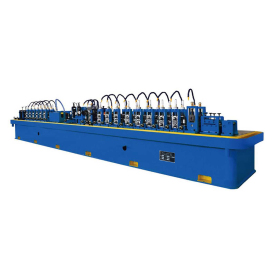[CNC Flying Saw Machine]Revolutionizing Manufacturing Efficiency: The Role of CNC Flying Saw Machines in Modern Production Processes
News 2024-9-14
The manufacturing industry is constantly evolving, driven by the need for enhanced efficiency, precision, and productivity. One of the innovative tools that have emerged to cater to these demands is the CNC Flying Saw Machine. This advanced machinery integrates computer numerical control (CNC) technology with high-speed sawing capabilities, thereby optimizing the cutting process for various materials, including metal, plastic, and wood. In this article, we will explore the features, benefits, applications, and future potential of CNC Flying Saw Machines in the manufacturing sector.
What is a CNC Flying Saw Machine?
A CNC Flying Saw Machine is a specialized cutting tool that utilizes CNC technology to provide precise and automated cutting of materials during the manufacturing process. Unlike traditional saws that require manual operation, flying saw machines are programmed to execute cuts at specified intervals with remarkable accuracy and speed. The term "flying saw" refers to the saw's unique ability to move swiftly across the material being cut while maintaining a consistent cutting speed. This feature allows manufacturers to minimize waste and optimize the timing of their production cycles.

Revolutionizing Manufacturing Efficiency: The Role of CNC Flying Saw Machines in Modern Production Processes
1. **High Precision**: One of the hallmark features of CNC Flying Saw Machines is their ability to deliver precise cuts. Utilizing advanced CNC software, these machines can be programmed with exact specifications, minimizing errors that can occur with manual cutting methods.

Revolutionizing Manufacturing Efficiency: The Role of CNC Flying Saw Machines in Modern Production Processes

Revolutionizing Manufacturing Efficiency: The Role of CNC Flying Saw Machines in Modern Production Processes
4. **Automatic Material Handling**: Many CNC Flying Saw Machines are equipped with automated material handling systems that feed material into the saw, allowing for continuous operation and reducing the need for manual intervention.
5. **Reduced Material Waste**: With precision cutting and optimized programming capabilities, these machines significantly reduce waste, making them an economically viable option for manufacturers.
Benefits of Using CNC Flying Saw Machines
1. **Enhanced Efficiency**: By automating the cutting process, CNC Flying Saw Machines allow manufacturers to allocate human resources to more critical tasks, thereby boosting overall productivity.
2. **Improved Safety**: Automated CNC operations reduce the risk of accidents associated with manual cutting processes. Operators are less exposed to the operational hazards of saw machines, leading to a safer work environment.
3. **Consistency in Quality**: The precision and repeatability offered by CNC technology result in higher quality cuts. This consistency benefits manufacturers by meeting stringent quality standards and reducing rework costs.
4. **Flexibility in Design**: With programmable functions, CNC Flying Saw Machines can easily adapt to various designs and specifications, offering flexibility to manufacturers in terms of product design changes.
5. **Cost-Effective Operations**: Despite the initial investment in CNC technology, the long-term cost savings from reduced material waste, labor efficiency, and increased throughput can significantly outweigh the initial costs.
Applications of CNC Flying Saw Machines
CNC Flying Saw Machines are utilized across numerous industries, including:
- **Metal Fabrication**: In metalworking shops, these machines provide precision cuts for structural components, automotive parts, and aerospace applications. - **Manufacturing of Pipes and Tubes**: The unique cutting capabilities make flying saws ideal for the manufacturing of pipes and tubes, allowing for high-speed cutting in standardized lengths. - **Woodworking**: In the woodworking industry, CNC Flying Saw Machines can efficiently cut boards and panels, facilitating a wide variety of furniture and construction applications. - **Plastic Industry**: The ability to handle diverse materials makes them suitable for cutting plastic sheets and components used in consumer products and industrial applications.
The Future of CNC Flying Saw Machines
As technology continues to advance, CNC Flying Saw Machines are likely to integrate even more sophisticated features, such as enhanced AI capabilities for predictive maintenance and real-time monitoring. Additionally, as manufacturers strive to embrace sustainable practices, energy-efficient flying saws that minimize environmental impact will gain traction.
In conclusion, CNC Flying Saw Machines represent a significant leap forward in manufacturing technology, enhancing efficiency, safety, and quality across various sectors. As the industry continues to embrace automation and advanced machining solutions, the role of CNC Flying Saw Machines will undoubtedly become more prominent, driving innovations that meet the ever-evolving needs of contemporary production.
